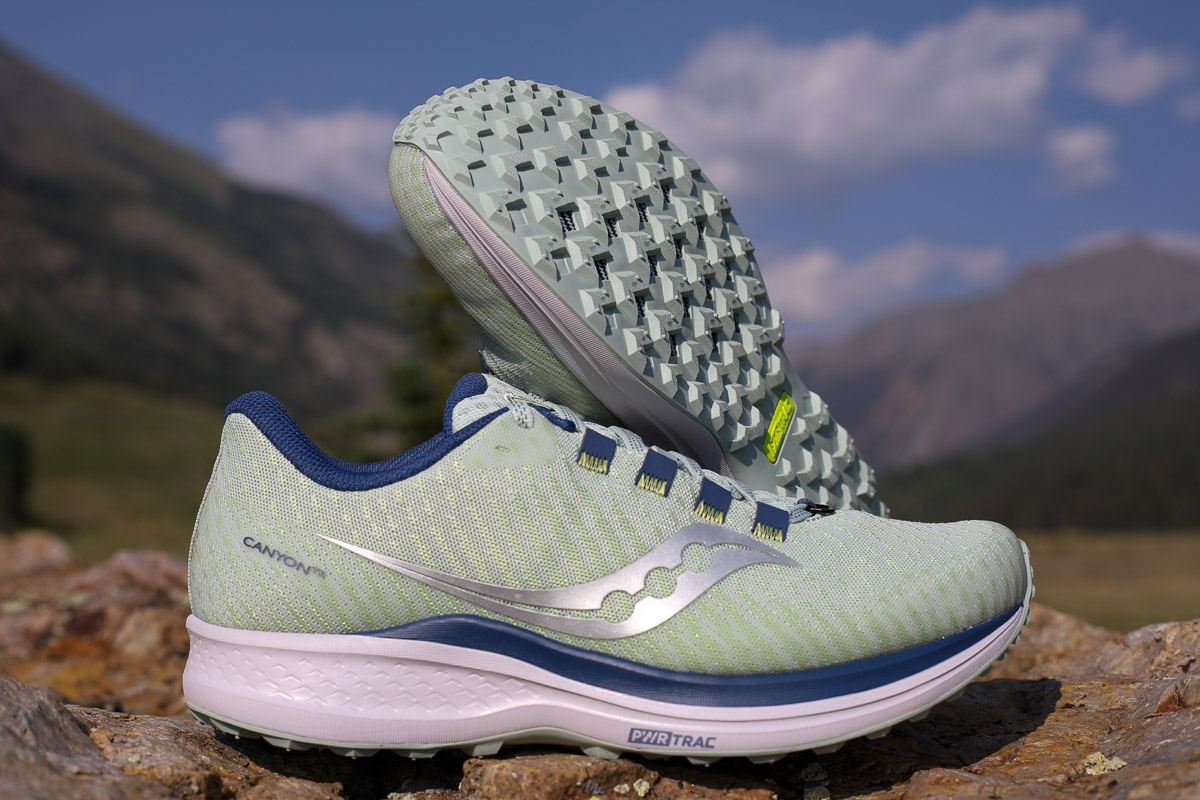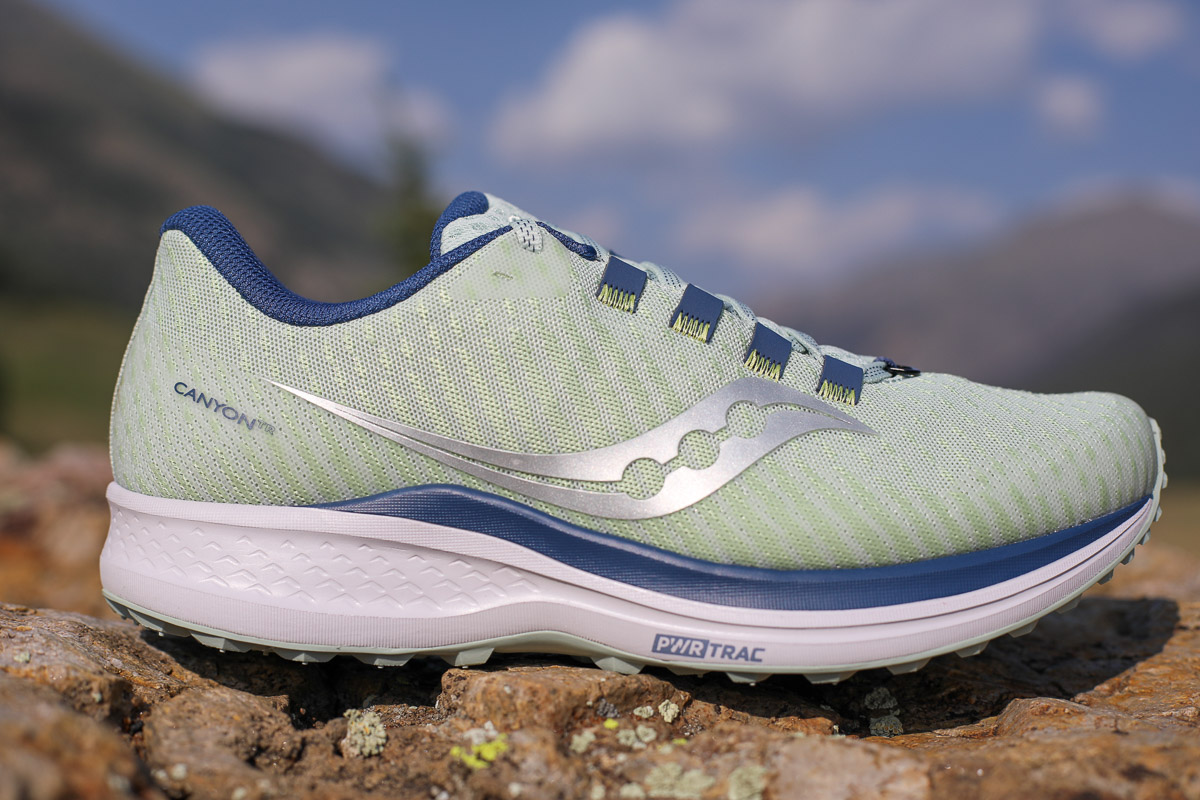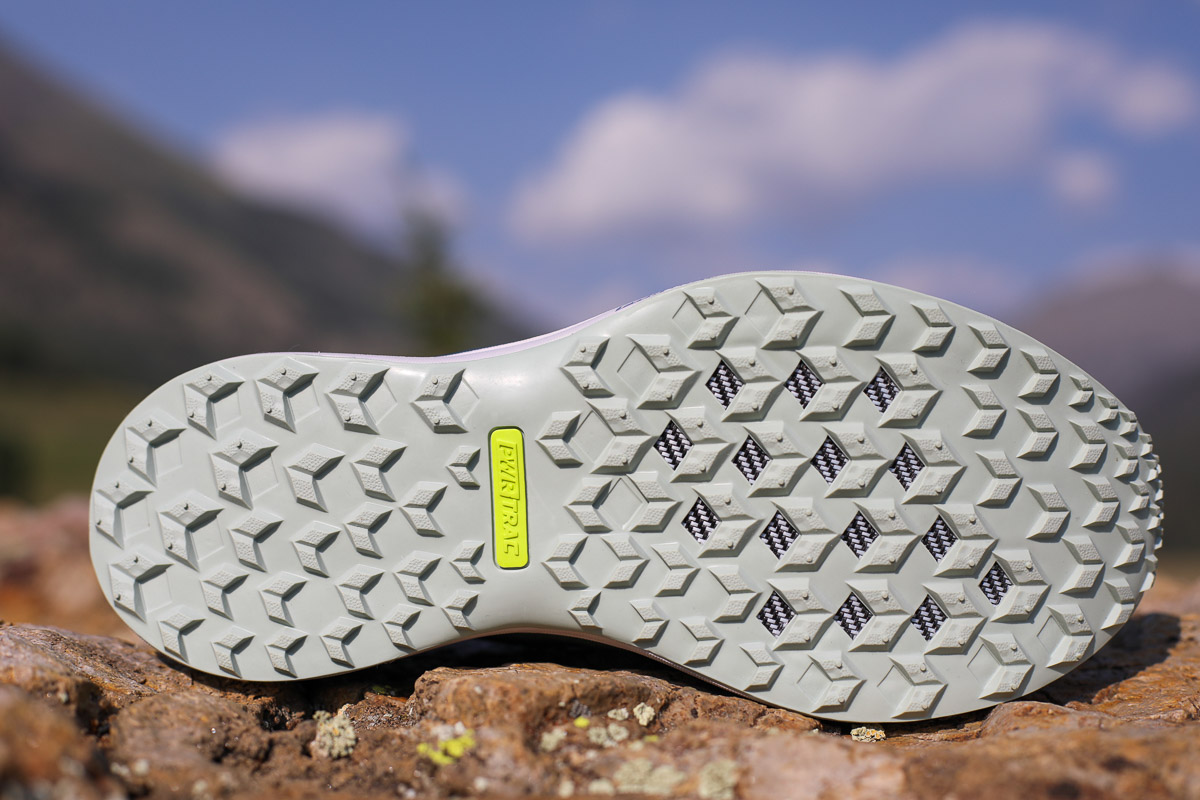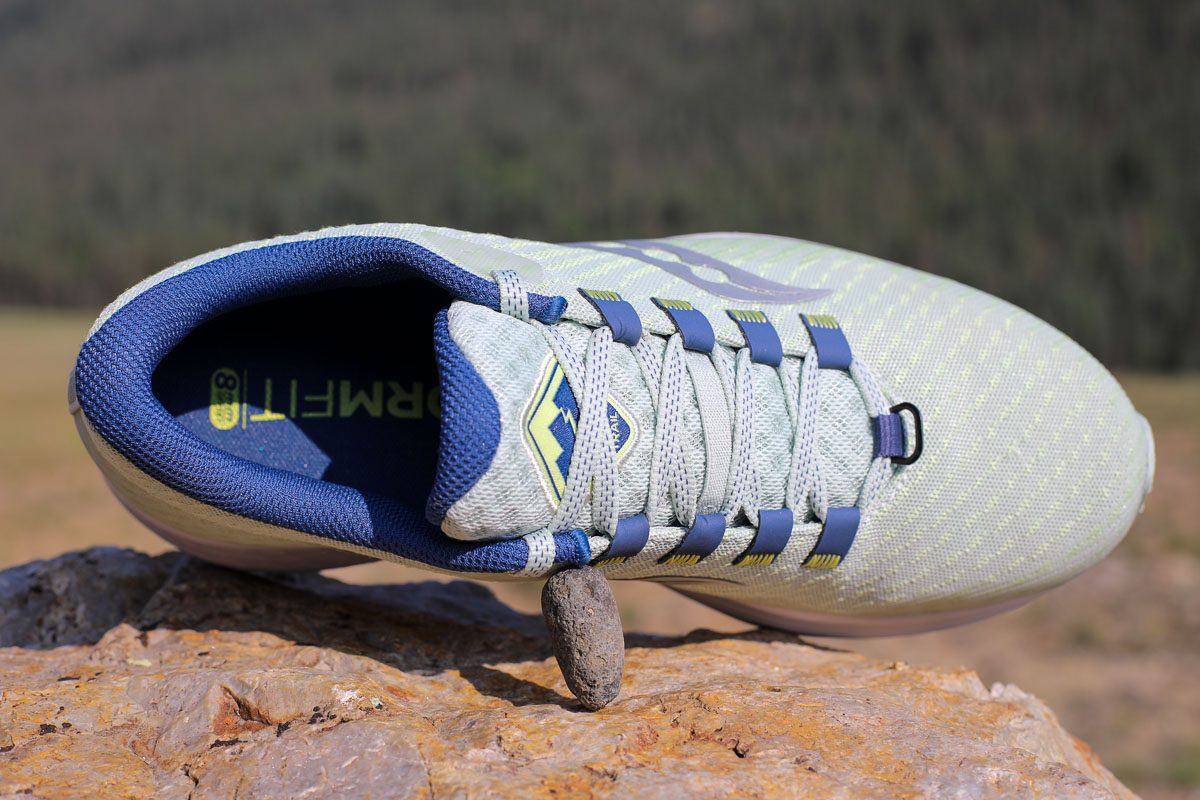As a trail runner, I hadn’t found a Saucony shoe that fit my list of needs until the Saucony Canyon TR ($120) popped up on my radar late last year. Decades ago, when I discovered that running could be enjoyable, and not just punishment dished out in conjunction with my seasonal team sport of choice, the Saucony Jazz road shoe enabled me to dive straight into my new obsession. As my love of Nebraska paved and dirt roads grew, I discovered a few other brands in our small running store that made things a bit faster, smoother, and lighter. Until I fully crossed over to the dark side of trail running, versions of the quintessential Saucony road shoe still appeared in my biannual rotation.
Though my favorite runs are in high alpine and mountainous terrain, many of my day-to-day runs are closer to home and on rolling singletrack dirt without much technicality. I’ve always loved well-cushioned shoes that allow me to glide over the trail, so shoes that function well on dirt roads and crushed gravel with a short stint on pavement are definitely a bonus. I’ve been really pleased with the Saucony Canyon TR as it offers this door-to-trail option in a really comfortable package.
Offered in both women’s and men’s versions, the Saucony Canyon TR is reasonably priced. The higher-stack heel of 34 millimeters paired with 26mm of stack in the forefoot leads to my favorite 8mm drop. It’s not the lightest shoe in the door-to- trail market, with the advertised weight per the Saucony website of 11 ounces (312 grams) for the men’s size 9 and an actual weight of 10.3 ounces (292g) for the women’s size 9.5. The weight of the shoe is something that is polarizing for some runners, but I didn’t find it to be an issue for me. I’m not exactly a gazelle, and I loved the protection offered by the ample midsole coupled with the smooth road-shoe ride. It’s a wonderful shoe for a recovery run, but I also found I could zip along on the rare day when speed comes a bit easier. The traction is definitely not aggressive enough for me on rocky terrain, but I don’t think most people would select this shoe for a technical running day. All in all, if you find your miles rack up on dirt roads, smooth singletrack, and a mix of paved, gravel, and dirt bike paths, this shoe is well-positioned for a place in your quiver.
As a side note on sizing, I wear a 9.5 in the shoe, which is similar to the size I consistently wear in La Sportiva and Merrell. This is comparable to an 8.5 in Salomon for my feet.
Shop the Women's Saucony Canyon TRShop the Men's Saucony Canyon TR
Saucony Canyon TR Upper
The upper of the Saucony Canyon TR is constructed from breathable knit with 33% recycled content. It feels a bit thicker between the fingers than some uppers, but I didn’t find it noticeably hotter than any other trail running shoes during record-breaking summer heat. Structure and support is added to the accommodating upper via a 3-D printed film that allows for a continuous connection, from the protective toe rand through the lower portion of the medial and lateral sides of the shoe, and up more than halfway on the heel. The film is very unobtrusive and hotspot free. After almost 200 miles, there are no creases or fatigue points noticeable in the upper. The iconic Saucony wave graces both sides of the shoe with a reflective material that catches light well, should visibility be necessary at night.
I love that Saucony stuck with the more classic padded-tongue style; this provides excellent protection from the laces and doesn’t create any discomfort along the front of the ankle. The distal gusset also keeps the tongue in place once adjusted during lacing. Instead of metal eyelets, flat loops keep the laces well aligned and comfortable. A small elastic guide loop is stitched midfoot across the tongue to keep excess laces in place. Though not necessary, I find this idea much more functional and efficient than lace garages on the tongue close to the ankle that some companies use. The flat laces are easy to grip, and stay tied with a simple double knot. The low-cut, moderately padded ankle collar is exceptionally comfortable while the heel cup itself has substantial structure. The shoe gripped my foot well, ensuring a secure, snug ride as long as the trail isn’t too uneven. It’s really not designed for doll-head rocks and gnarly ruts or roots as the shoe does tend to roll and feel less stable in those circumstances.
Overall, I’d classify this semi-curved shoe as having a medium-volume upper with a just bit of the splay room negated by the curvature. The form-fitting stretch of the upper still allowed for wiggle room for my fifth toes. Regardless of dust and heat, I had zero issues with blisters.
Saucony Canyon TR Midsole
The company uses their PWRRUN midsole cushioning in the Saucony Canyon TR, which is the next evolution after their older EVERUN technology, and is also currently found in the Kinvara 12 and Peregrine 11 models. To compare, PWRRUN is an all day, every day version of the more performance oriented PWRRUN+ midsole featured in the Switchback 2. It’s a blend of TPU and EVA that offers maximal cushioning without feeling significantly boggy or bouncy. It doesn’t feel maximally cushioned like Hoka One One shoes or some Altras, it simply feels protectively cushioned in a firm yet responsive manner. This midsole makes me feel like a road runner on the trails with a bit more cushioning and protection to smooth things out.
I can imagine for lighter, faster runners, this midsole might feel a bit lethargic. It’s not a zippy shoe, but what it lacks in speed and explosiveness, it makes up for in the smooth heel-toe transition and plush ride. I find the rock protection to be more than adequate and even when I took the shoe on rougher terrain, I didn’t have issues with rocks underfoot. Nothing is explicitly stated by Saucony about a rock plate being present, but when you peer through the small gaps in the forefoot portion of the outsole, you can see that a woven rock plate is there.
Saucony Canyon TR Outsole
The outsole is what pushes the Saucony Canyon TR more toward the dirt road, smooth singletrack, and paved end of the door-to-trail spectrum. Small 3mm chevron-shaped multi-directional lugs made from the PWRTRAC tacky rubber line the bottom. The low-profile nature of the lugs makes for a smooth ride on non-technical terrain, crushed gravel, and pavement but definitely sacrifices some traction when rubble or moisture is present, particularly on steeper angles. They grip well on slab and slickrock, but if there is mud, wet roots, scree, snow, or anything providing a ball-bearing-style experience, you’ll need to have solid confidence and skating skills. I don’t necessarily think this is a huge negative, because most of us probably have two pairs of trail shoes for exactly this reason — you need the right tool for the terrain. I’m very impressed with how the outsole is holding up. After almost 200 miles, there are minimal signs of wear, even in my heel-strike and push-off zones where I typically render portions of outsoles a bit smoother than the rest.
Saucony Canyon TR Overall Impressions
I’ve been really glad to have this shoe on my feet this spring and summer. I picked up my first case of plantar fasciitis in my running career this spring, and on the days when the symptoms were more severe, these were the shoes that still allowed me to run without a serious flare-up. I appreciated the ample cushioning and the easy road running feel of the Saucony Canyon TR for the runs that start or end with a mile of pavement, the smooth, curvy, singletrack on the rolling prairie trails, the hardpack dirt-road hills, and even for some of the rocky runs on my local “mountain of green” when cushioning was the number-one priority even at the sacrifice of traction and a bit of stability. Maybe I still have a bit of road runner in me, but I have enjoyed the Saucony Canyon TR enough that there will be another pair in my future.
Shop the Women's Saucony Canyon TRShop the Men's Saucony Canyon TR
Call for Comments
- Are you running in the Saucony Canyon TR? If so, what do you think of the shoe overall?
- On what terrain are you using this shoe? Where and how do you find it performs best?
- Can you comment on any specific features of the Canyon TR?
[Editor’s Note: If you’re affiliated (i.e., an employee, ambassador, etc.) with a brand, please share your relation in each of your comments on this article. Thanks!]
Our Favorite Trail Running Shoes
Check out our Best Trail Running Shoes article to learn about our current favorite trail running shoes!





